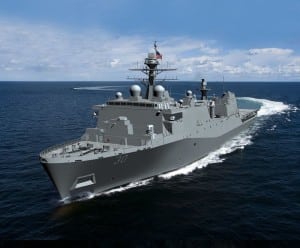
HII’s Ingalls Shipbuilding [HII] is considering changes to the design of the San Antonio-class amphibious transport dock ships (LPDs) while the Defense Department directs a review of the class in an effort to lower costs before deciding to buy more. Last year, the Office of the Secretary of Defense (OSD) directed the Navy to conduct another study on LPDs to determine how to move forward after buying the third Flight II ship, LPD-32. Last month, Chief of Naval Operations Adm.…

 By
By 











